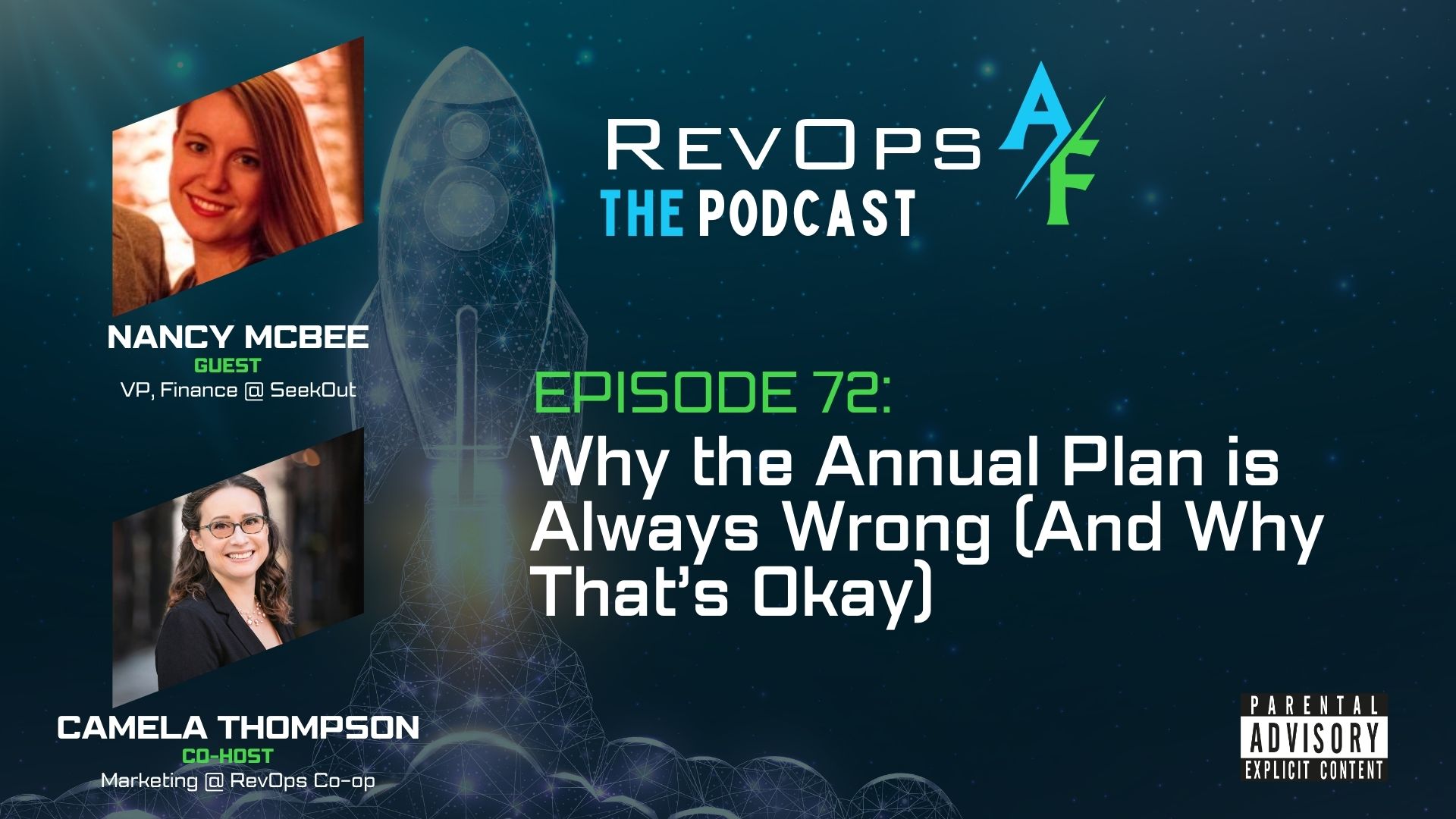
Episode 72: Why the Annual Plan is Always Wrong (And Why That’s Okay)
Why annual plans are always wrong and how to bridge the gap between finance and RevOps. This VP of Finance shares strategies for better budget planning.
Welcome to the latest episode of the RevOpsAF podcast with Jeff Serlin, Co-founder and Chief Revenue Operations Officer at Revcast, and co-host Matt Volm. Jeff has seen it all, from the nitty-gritty of sales ops to the big-picture strategies that drive revenue growth.
In this episode, Jeff and Matt unpack the secrets of creating a flywheel between planning and execution. They delve into why plans often fail from day one, the pitfalls of diving straight into spreadsheets, and how continuous adjustment based on real-time data is key. Plus, they discuss actionable tips on best practices for planning, the importance of validating assumptions, and why flexibility is necessary when executing your revenue strategy.
It’s common for revenue plans to be abandoned early because they were wrong from day one. This happens when we don’t question our assumptions. Your plan might require 50 sales reps but you find yourself with only 45 reps. Or you need to hire 5 new mid-market reps, even though your mid-market segment is underperforming and your enterprise segment is overperforming.
“We have to mediate between the CFO, who wants to raise quotas, and the CRO, who wants to leave them where they are to build that winning culture.” - Jeff Serlin
Jump to the clip to hear about the different ways our assumptions can set us up for failure.
Jeff introduces the concept of the planning and execution flywheel—a continuous cycle where you plan, execute, measure, and adjust. Plans shouldn't be shelved after they're made; they need to be living documents that adapt based on real-time data.
Revcast aims to help companies get to a better plan and then constantly stay on top of performance against your base plan while also monitoring trends to identify signals that will help you make the adjustments needed to stay on track.
Jump to the clip for Jeff’s advice on why plans should always make room for adjustments.
Jeff shares his key best practices for planning:
"A plan is just one path to get to your goals. There are many paths to get there." - Jeff Serlin
Jump to the clip for a thorough deep dive into Jeff’s planning best practices.
Jeff highlights a common pitfall in revenue operations—focusing too much on short-term sales numbers while neglecting long-term metrics like hiring timelines, ramp times, and attrition rates. While tools like Salesforce and Tableau make it easy to track immediate performance, they often overlook these crucial long-term indicators.
One size doesn't fit all when it comes to KPIs. Jeff emphasizes that different sales motions—SMB, mid-market, enterprise—require tailored KPIs to accurately measure success. For instance, focusing on velocity might make sense for SMB sales, but enterprise sales should hone in on metrics like ASP and account penetration.
By combining data with qualitative insights and understanding the interplay between different KPIs, RevOps can make smarter decisions that drive sustainable growth. Build the narrative and understand, and maybe even test, our hypotheses a little bit when making those changes.
Jump to the clip for examples of unique KPIs like hiring a Head of Enablement by a deadline.
It’s okay to make changes throughout the year. You don’t have to commit to your plan 100%. Remember that a plan is just a path to get to your goals and you might need to evaluate other paths along the way. Keep the same revenue target but change the way that you get there if one of your strategies isn’t delivering.
The point of a plan is not to perform exactly as it’s laid out. The point is to try and execute against the plan, understand why you’re achieving, or not achieving certain parts, and then optimize it every month. Be flexible and have some agility.
“You should always make a decision. We're supposed to be hiring per plan or investing per plan. Do we still want to do that? Or do we want to do something different?” - Jeff Serlin
Jump to the clip to learn how to avoid the sunk cost fallacy when executing your plan.
Our average member has more than 5 years of RevOps experience. That means you’ll have real-time access to seasoned professionals. All we ask is that you’re generous with your knowledge in return.